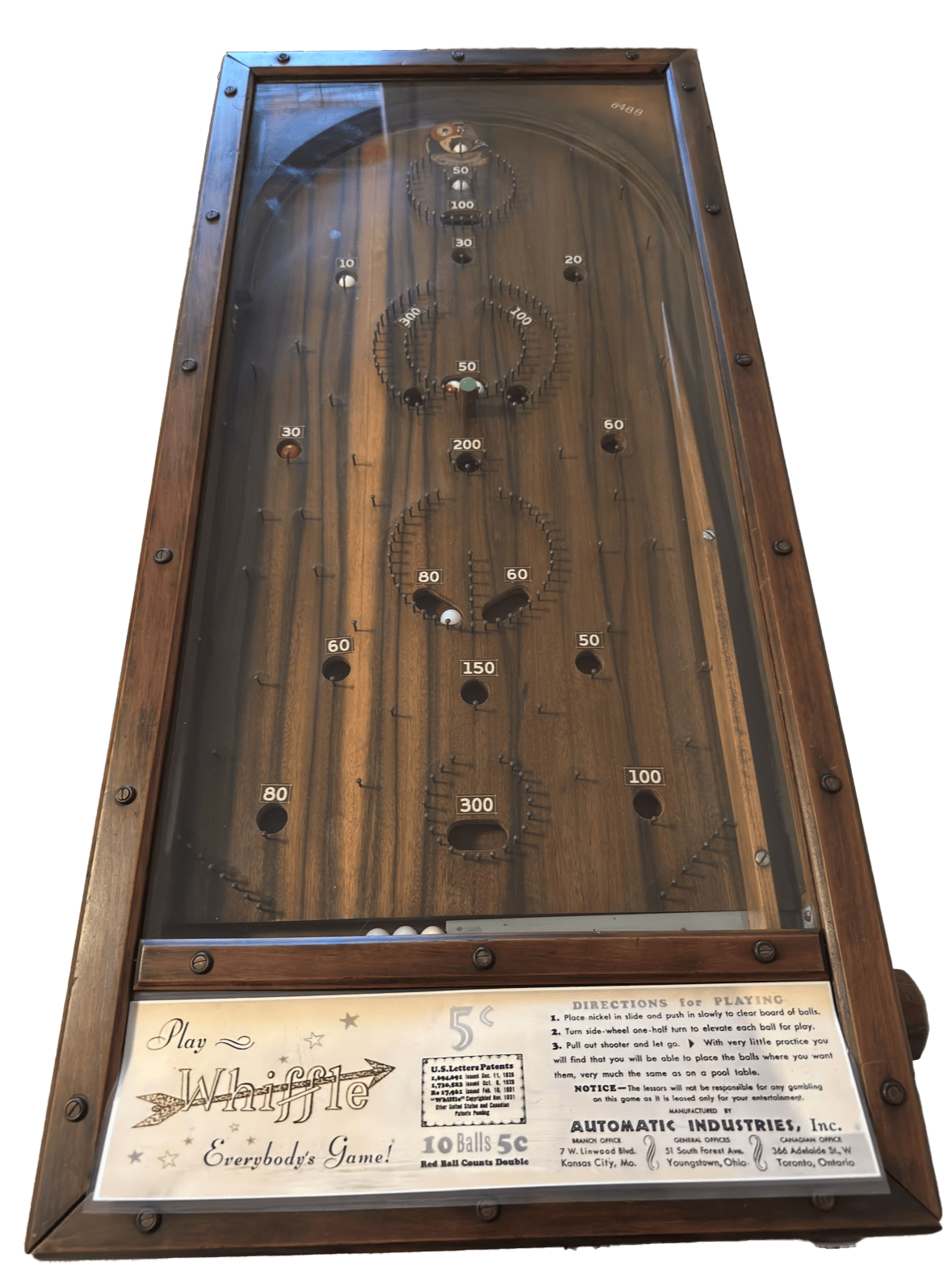About the Whiffle Machine - Page 1
Historical Origins and Development
The Whiffle machine's story begins with Arthur L. Paulin, a carpenter from Youngstown, Ohio, who, according to family accounts (via his daughter Lois Paulin Hollerman and granddaughter Karen Kettering), discovered an old, dusty board with holes and nails in his barn around Christmas 1930. This board, estimated to be about 50 years old, is often linked to British Corinthian bagatelle games (e.g., Witzig's 'Corinthian 15'), though no definitive evidence confirms its exact origin. Paulin adapted this into a Christmas gift for his daughter Lois, who loved it so much that it drew neighborhood children, sparking its commercial potential during the Great Depression. Youngstown, hit hard by closed steel mills, provided a backdrop where this inexpensive entertainment gained traction.
Paulin partnered with Earl W. Froome, a salesman, along with Myrl Park and William Howell (each holding 1/6 partnerships), to form Automatic Industries. The company secured a $300 loan from the Youngstown Bank in January 1931, marking the official start of their venture. The first prototype, dubbed "Old Jenny," was developed shortly after their partnership was formalized on January 28, 1931. By March 15, 1931, the first 10 production Whiffle machines were installed, positioning it as a contender for the first coin-operated pinball machine. This timeline is supported by Richard M. Bueschel's Pinball Vol 1, which notes Whiffle reaching the market just before the Chicago-based "Whoopee" (released March 28, 1931), fueling the debate over the "first pinball" title.
However, this narrative warrants scrutiny. Earlier coin-operated games, such as Charles P. Young's 1892 "Coin Game Board" and Henry John Gerrard Pessers' 1889 marble game, predate Whiffle, suggesting the "first pinball" claim may reflect its modern layout and commercial success rather than an absolute invention. The family story of the barn board, while compelling, lacks corroboration—Paulin and Froome never publicly identified its source, possibly to avoid legal or competitive issues. The rapid rise from a homemade toy to a mass-produced game also raises questions about whether other influences or prior designs were understated.
